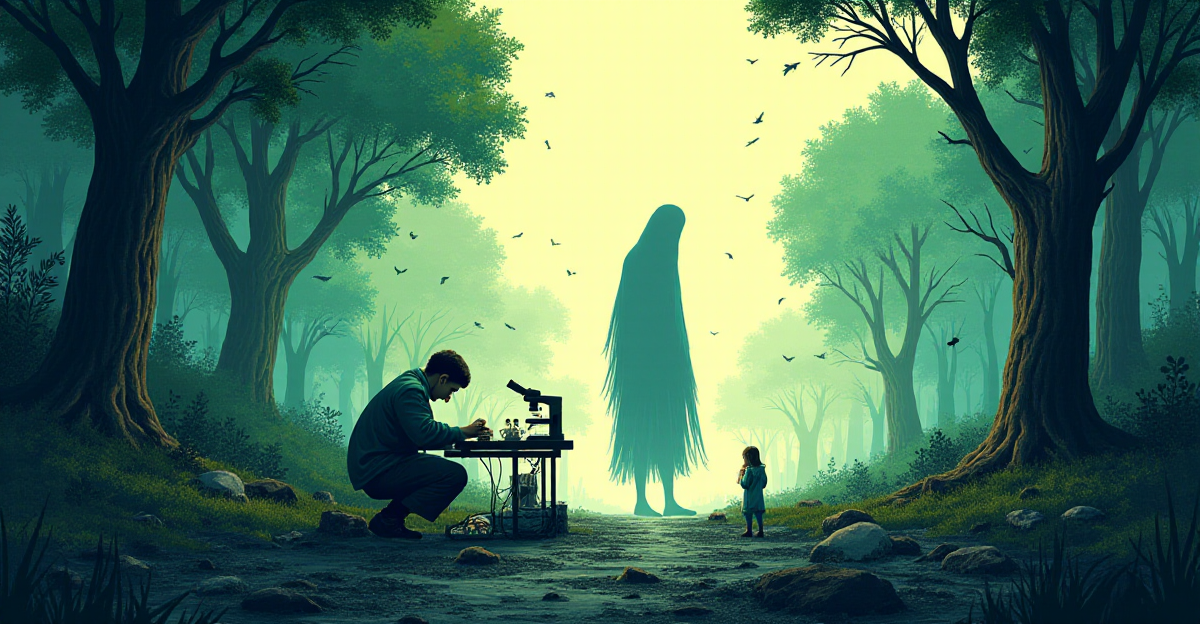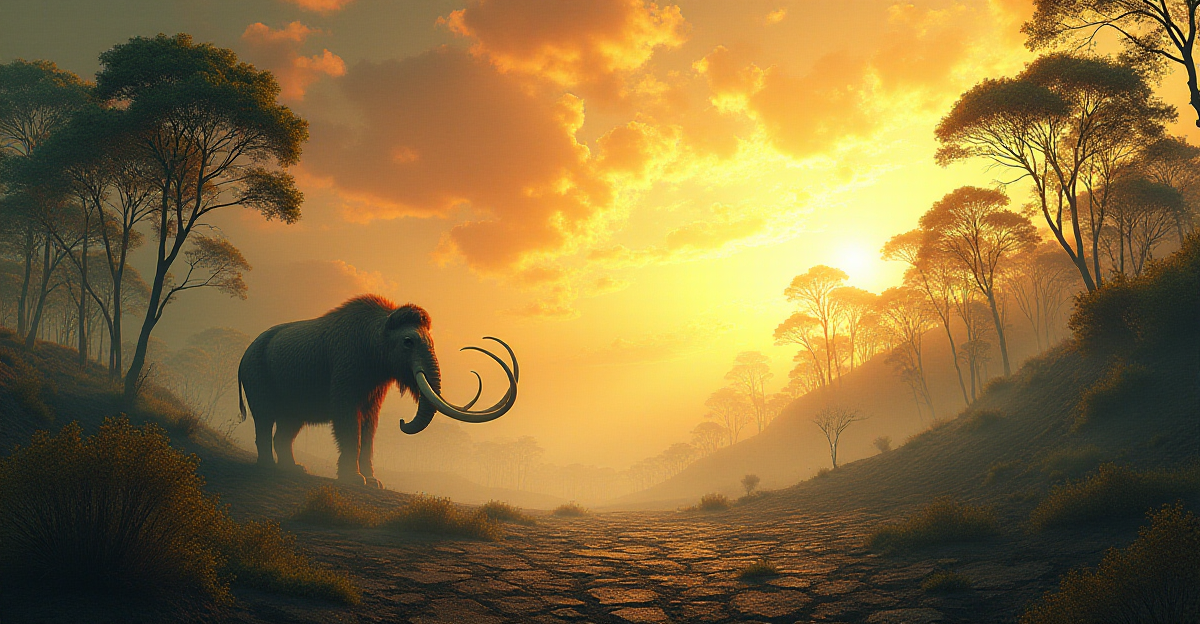Review the innovative research underlining the resurrection of extinct species. Talk about ethical issues, scientific techniques like cloning, and the effects de-extinction has on the ecosystem.
Table of Contents
- Technologies for De-Extinction
- Ethical Considerations of Extinct Species Revival
- Environmental Impact of Bringing Back Extinct Species
- Case Studies of Attempted Revivals
- Extra’s:
Technologies for De-Extinction

Ever picture a woolly mammoth wandering the planet? Though it seems like science fiction, scientists are actively investigating de-extinction—that is, techniques to bring back extinct animals. Rapid advancement in this sector challenges scientific limits and forces us to rethink the fundamental idea of extinct.
Imagine a time when we might be able to revive extinct creatures like the gastric-brooding frog or the passenger pigeon. These are only a handful of the species experts are looking at resurrecting with different approaches including genetic engineering and cloning.
The Promise of De-Extinction Technologies
Investigating many approaches to reach de-extinction, scientists are looking at genetic engineering and cloning. Genetic engineering, sometimes referred to as gene editing, lets researchers change the DNA of an organism so that a species with a genetic composition like that of an extinct one results. Extraction of DNA from preserved tissue samples or fossils and transfer of it into an egg cell of a living species is the basis of cloning. This method might produce a clone of a species that has gone extinct.
The Challenges and Ethical Implications of De-Extinction
Although the concept of reintroducing extinct animals is fascinating, there are several difficulties and moral questions. For example, deteriorating tissue samples often make it difficult for scientists to get whole DNA sequences. Moreover, bringing extinct species back into contemporary environments could have unanticipated effects on the ecology and upset fragile equilibrium.
Should we be entitled to bring back extinct species? What possible hazards and advantages come from this innovative technology? These are only a handful of the difficult issues facing ethicists, biologists, and environmentalists.
Real-World Examples of De-Extinction Research
De-extinction research is most famously seen in the attempt to revive the passenger pigeon. Once counting in the billions, this bird was hunted to extinction during the early 20th century. Scientists want to replicate this magnificent bird from conserved specimens using DNA from them and bring it back into the wild.
Another intriguing effort centers on the gastric-brooding frog, an amphibian whose eggs were nurtured within its stomach. By means of cutting-edge genetic technologies, researchers aim to resurrect this unusual species from extinction.
The Future of De-Extinction
De-extinction is still a fast developing discipline with enormous promise. Although it is still early days, researchers are advancing knowledge and manipulation of the basic blocks of life significantly. One day, if scientists keep improving their methods, extinct species could find themselves wandering the planet once more.
Still, we should proceed carefully. Before we bring back any extinct species, we must thoroughly weigh the ethical and environmental consequences of de-extinction. Although the future of de-extinction is unknown, this discipline is clearly fast altering our knowledge of life and extinction. This fascinating and demanding path begs important issues about our relationship with the natural world and the authority of science.
Ethical Considerations of Extinct Species Revival

Imagine a world in which the woolly mammoth once more wanders the frozen tundra or in which passenger pigeons soar, their flocks dimming the sun. Though it sounds out of a science fiction book, bringing extinct species—also referred to as de-extinction—back to life thanks to developments in genetic engineering and “cloning is becoming a real possibility.” Although the concept is interesting, it also begs some grave ethical issues regarding human responsibility in forming the environment. Let us investigate some of the main ethical issues related to this innovative discipline.
The Science Behind De-Extinction
Relatively recently developed, de-extinction is based on the concept of creating a replica by use of genetic material from extinct species. From preserved materials, such frozen carcasses or fossilized bones, scientists can recover DNA. For instance, researchers have unearthed woolly mammoth DNA from Siberian frozen carcasses. The extinct species can then have a genetic blueprint created from this DNA. Like an elephant in the instance of the woolly mammoth, this blueprint can be slipped into the egg of a closely related living creature. This produces a hybrid embryo that might produce a de-extinct animal should it be placed into a surrogate mother. Though scientists have advanced recently, there are still many difficulties to solve as this is a quite complicated procedure.
Weighing the Costs and Benefits
De-extinction might completely transform conservation biology. Returning extinct species could help to restore biodiversity and enhance ecosystems, hence strengthening natural world resilience and balance. Think on the practical advantages rather than merely picturing a world full of passenger pigeons. The state of forests depended much on the passenger pigeon. Their flocks distributed seeds and helped to limit bug numbers, therefore enabling the growth of forests. Imagine what effect bringing passenger pigeons back into our forests now might have. These species might help ecosystems be restored and “climate change’s effects lessened.” Studying de-extinct animals could potentially teach us a lot about the past and provide insightful analysis of evolution and the interdependence of all living on Earth.
Still, de-extinction carries certain possible hazards as well. De-extinct creatures, for instance, might compete with other living species for resources or transmit unidentified diseases that would damage current ecosystems. Furthermore raising questions are issues regarding the welfare of de-extinct animals. They would be thrust into a world far different from their developed one. Born today, a woolly mammoth could find it difficult to fit the changes in habitat and temperature brought about since its extinction.
The Challenge of Ethical Frameworks
Building ethical models for de-extinction is absolutely vital. It entails thinking about the rights of next generations, the possibility for unanticipated results, and the intrinsic worth of biodiversity. Furthermore crucial is our right to tamper with the natural path of evolution. While some contend that de-extinction is an opportunity to rectify some of the wrongs humans have committed to the natural world, others contend that it is a sort of human hubris. Before starting any de-extinction projects, we must ultimately balance the possible advantages and hazards of de-extinction.
Moving Forward
De-extinction is a multifarious and difficult problem. Under the direction of ethical values and a great regard of the natural world, we have to approach it carefully. To agree on the moral limits of this technology, we must encourage world communication and cooperation. Guiding the proper growth and implementation of extinct species revival will depend critically on interacting with many points of view from scientists, ethicists, environmentalists, and indigenous people. We can negotiate the difficult ethical terrain of de-extinction and guarantee that this revolutionary technology benefits the well-being of both humans and the earth only by careful thought and responsible conduct.
Environmental Impact of Bringing Back Extinct Species

Imagine a time when we might resurrect animals like the passenger pigeon or the woolly mammoth. One in which we might undo extinction. Sounds fantastic, just like it is. The concept of de-extinction excites one since it promises a world full of diversity. We should consider the implications, though, before we begin cloning pigeons or mammoths. Returning extinct species could have unexpected effects on our world, hence we should carefully consider those hazards.
What If We Bring Back the Dodo?
Consider the dodo, a flightless bird gone extinct in the 17th century. It disappeared from habitat degradation and invading species. Should we bring it back, would it thrive in a contemporary setting? Imagine a dodo negotiating a world of vehicles, pollution, and newly emerging predators. It might be threatened by illnesses, rivalry with other species, and even climate change. Additionally upsetting the delicate equilibrium of ecosystems is de-extinction. For instance, once flocking in billions, the passenger pigeon. Its comeback could affect species of birds depending on the same food supplies. We have to know how extinct species might fit into contemporary ecosystems before bringing them back.
De-extinction and Genetic Engineering
Modern genetic engineering methods including cloning are frequently used in de-extinction projects. These methods generate moral questions and can have unanticipated results. If the Tasmanian tiger, a carnivorous mammal extinct in the 20th century, were brought back, for instance, it may throw off the fragile equilibrium of its natural habitat. Likewise, great thought should go into returning the golden toad, which vanished in the 1980s from habitat loss and climate change. Since its extinction, its previous habitat has undergone notable change. De-extinction calls for careful planning, cautious approach, and a dedication to knowledge of its consequences.
Past mistakes teach us lessons. Invasions of alien animals such as the cane toad in Australia have had terrible effects. We should learn from past mistakes and weigh the possible effects of de-extinction before we discuss restoring extinct species.
Although de-extinction is a fascinating concept, our first priorities should be safeguarding the ecosystems we now have and maintaining the species presently present. We should deal with the underlying reasons of extinction including pollution, habitat loss, and climate change. Though it shouldn’t be our main emphasis, de-extinction could be a tool for ecological restoration.
Though it’s an interesting idea, de-extinction calls for meticulous preparation and cautious approach. We have to weigh the possible risks against rewards. We must grasp the possible effects on our earth thoroughly. Let’s cooperate to guarantee responsible and sustainable de-extinction, should it take place.
Case Studies of Attempted Revivals

Imagine a world in which once-extinct species once more prowish the planet. Both scientists and the general public are enthralled by this idea, which generates discussions on the possible advantages and moral consequences of de-extinction. Although the concept of recovering extinct species sounds like something from science fiction, it is an actual scientific endeavor posing important issues regarding our responsibility in forming the natural world. In genetic engineering, we have made great strides; scientists are actively looking for methods to revive extinct species, therefore stretching the bounds of science and questioning our knowledge of what is feasible.
Let’s look at a few case studies showing the advancement and challenges connected with de-extinction. These efforts highlight the amazing opportunities as well as the possible hazards and moral questions related to resurrecting extinct creatures.
The Passenger Pigeon: A Symbol of Hope and Challenges
Once the most plentiful bird in North America, the passenger pigeon perished in early 20th century. Humans significantly changed the surroundings; the disappearance of the passenger pigeon reminds us sharply of the results of human activities. Imagine a bird whose large flocks previously clouded the sky; this species was essential for its ecology. Scientists are utilizing preserved DNA now to try to bring the passenger pigeon back from extinction.
They are trying to produce a genetic map for the bird after effectively extracting DNA from relics. Still, the road is long and complicated. Are we able to replicate the great flocks needed for survival and reproduction? Could these birds fit into an environment very different from the one they had lived in? We must take into account the possible effects on current ecosystems as well as the environmental consequences of bringing back a species so plentiful in a planet undergoing significant transformation.
The Woolly Mammoth: A Frozen Enigma
Both experts and the general public have been enthralled with the iconic Pleistocene mammal, the woolly mammoth. Imagine a group of woolly mammoths once more prowling the Arctic! Siberian well-preserved relics have given researchers the chance to launch bold mammoth cloning projects. Recovering DNA has helped researchers to fill in gaps in the existing genetic sequences and rebuild the whole mammoth genome.
Developing a healthy embryo from the mammoth genome transferred into an elephant egg is a difficult and sensitive operation. Along with ethical issues and environmental consequences to consider, this effort offers major technical difficulties. Creating a new species begs issues about our influence on the natural environment, especially one closely linked to a current one.
Potential Benefits and Risks of De-extinction
Bringing back extinct species has hazards even if it could help biodiversity and ecological functioning. Reintroducing the passenger pigeon might restore ecological balance or help manage numbers of invading species. Offering a special chance for conservation biology study, de-extinction could also provide insightful analysis on the genetic composition and evolutionary background of extinct species.
But de-extinction carries hazards as well. Bringing extinct animals back into contemporary habitats could throw off the natural balances and have unanticipated effects. One also has to consider the ethical consequences. Are we entitled to be God and revive extinct species? Are there animals we should bring back from our driving to extinction?
Lessons Learned and Future Prospects
Lessons in de-extinction abound from the efforts to revive the woolly mammoth and the passenger pigeon. They draw attention to the technical difficulties, moral issues, and complicated ecological consequences connected to bring back extinct animals.
Many challenges still exist even if scientists are advancing genetic engineering and cloning. The success of de-extinction depends not only on technological developments but also on a full knowledge of the ecological ramifications and ethical issues.
Notwithstanding the difficulties, the quest of de-extinction is still an interesting field of research for science. These initiatives provide a glimpse into the past as well as maybe fresh instruments for conservation biology. Learning from these case studies can help us to shape a future in which de-extinction is handled with care, scientific rigor, and a great respect of the natural environment.
Extra’s:
For a deeper understanding of the intricate processes involved in reviving extinct species, you might find our post on “Quantum Biology: Nature’s Use of Quantum Mechanics” particularly insightful. It delves into the world of quantum mechanics and its role in biological processes, offering a fascinating glimpse into the fundamental building blocks of life. Furthermore, exploring the concept of “Mirror Neurons: The Science of Empathy and Imitation” can provide a unique perspective on the potential social implications of de-extinction. Understanding how our brains mirror the actions and emotions of others could shed light on how resurrected species might integrate into existing ecosystems.
If you’re interested in exploring the ethical and philosophical implications of de-extinction, a comprehensive analysis is available on the “Philosophy and ethics of de-extinction | Cambridge Prisms: Extinction | Cambridge Core” website. This resource provides a robust examination of the moral and ethical considerations surrounding the revival of extinct species. For a compelling example of the scientific advancements being made in de-extinction, you might find the “Stem-cell milestone for woolly mammoth restoration : Shots – Health News : NPR” article particularly captivating. It highlights the groundbreaking use of stem cells in the effort to bring back the woolly mammoth, demonstrating the remarkable progress being made in this field.












Hello colleagues, good piece of writing and fastidious arguments commented at this place, I am in fact enjoying by these.